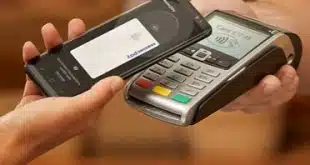Though merchants have been permitted since 2013 to add surcharge fees to credit card transactions, it’s only in 2016 and 2017 that the practice will become the norm, ushering in a new phase of a sometimes contentious relationship between merchants, the payment card industry, and consumers.
That’s the assertion of Adil Moussa, principal of Omaha, Neb.-based Adil Consulting, who is drawing attention to the issue via a series of emails. A 2012 court ruling over credit card interchange and network acceptance rules called for a relaxation of networks’ surcharging policies. Since Jan. 27, 2013, merchants have been able to add a surcharge equal to the lesser of the merchant discount rates for Visa Inc. and MasterCard Inc. credit card transactions, or 4%. Surcharging does not apply to debit or prepaid cards. Merchants also must disclose surcharges at the point of sale and on receipts or on an e-commerce checkout page.
Surcharging has been slow to catch on among U.S. merchants. Many merchants, for example, have avoided surcharges because of concerns about a consumer backlash. But now the conditions are changing, Moussa says.
“More and more merchants are contemplating surcharging,” Moussa tells Digital Transactions News.
Besides fear of a consumer backlash, Moussa sees three other reasons why surcharging hasn’t become widespread so far. One is that most merchants are not aware they can add a surcharge fee, he says.
“When the Visa-MasterCard settlement happened, all media was covering the settlement amount and nobody paid attention to the small print,” he says.
Another reason is that acquirers hadn’t developed quickly enough the technology to accommodate surcharge fees. The preparation for the EMV migration was just one of the impediments. And a third reason is that independent sales organizations and acquirers had little incentive to sell surcharge pricing to merchants.
Now, with the EMV migration well under way, surcharging stands to gain much more attention. “The problem in the market now is a lack of awareness,” Moussa says. “But, now it’s becoming more and more visible. It’s such as easy sell to make.”
ISOs and acquirers can pitch surcharging as a way for merchants to avoid worrying about their payment-processing fees, Moussa says. That’s because the surcharge will transfer to consumers some or all of a merchant’s card-acceptance costs.
Of course, some consumers will cry foul over the fees, but Moussa suspects many will side with local merchants over banks that issue payment cards.
“It is easier for a lobbying group to mobilize consumers against banks than against Joe’s Pizza, who is struggling to pay rent and needs to lower his expenses,” he says. “Joe’s Pizza has friends and followers. Banks are seen as impersonal.”
What the advent of surcharging may portend is an attempt by merchant groups to seek a credit card interchange cap. The Durbin Amendment to the Dodd-Frank Act instituted a debit interchange cap in 2011.
“This goes back to who wants a bigger piece of interchange and who wants to make money on it,” Moussa says. “Who’s going to get a bigger piece of the pie?”
As merchants begin to surcharge, consumers will voice their concerns, and politicians will hear from merchant and bank lobbyists, which may prompt discussion about a credit card interchange cap.
“The perfect spark is having the interchange fees on the receipt,” Moussa says. “Once consumers start seeing the charges, the rumbling will begin.”




